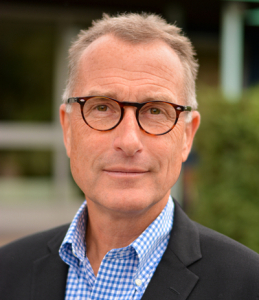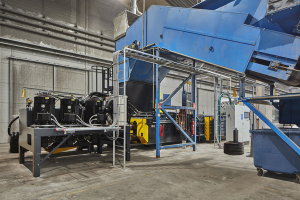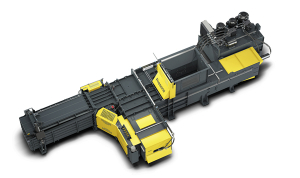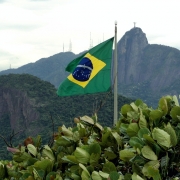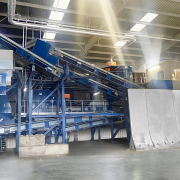Presona: All About Compacting Different Materials
Sweden-based company Presona AB designs and manufactures balers with pre-pressing technology for efficient baling of the different materials – from paper and plastic to household and industrial waste. The product range also includes pneumatic waste extraction systems for the graphics industry and paper and packaging manufacturers.
However, also Presona has been affected by the restrictions and challenges posed by the pandemic. Despite that the firm continued supporting their customers to minimize any disruptions to their operations. Therefore, we talked to Presona’s CEO Stefan Ekström about how the pandemic affected the company, in which way digitalization led to technological advancements and the new baling press MP 270 MH.
To what extent has the pandemic affected your company regarding business operations and incoming orders?
We had quite a few orders for balers when the pandemic started. We were very grateful for that because the travel restrictions have made it harder for our sales staff to visit customers. I feel that the market is a bit sluggish at the moment. There is a lot of interest in our products. But it takes longer than before for customers to decide to place an order. I believe that the effects of the pandemic on material flows have created some uncertainty for some of our customers.
The company’s main markets are in Europe and the Middle East. However, in which new countries have you managed to gain a foothold recently?
Presona has always worked globally, but Western and Eastern Europe and the Middle East are indeed our “home markets”. For the last couple of years, we have been working more and more in Mexico and the USA. Presona as a company was active in the US previously, but we left that market for various reasons some years ago – long before I started working for Presona. Now, we are back in the US and Canada with Stadler America LLC, a great partner! Our collaboration feels just right, and we have already done several deals with satisfied customers as a result.
To what extent have developments such as digitalization, artificial intelligence, or Industry 4.0 led to technological advancements and optimizations for baling presses?
The recycling industry is moving quite slowly, but I feel there has been an increased interest in digitalization over the last couple of years. For example, we see increased demand from our customers to measure more and more things in the balers and retrieve production data from the machines via the internet. The information is used to analyze and streamline production. It is no problem for us to meet these requirements with our current technology. However, I think going from this to Industry 4.0 with interconnected machines and processes and AI’s making decisions is a long process that will take time for us as an industry. Industry 4.0 is also called “the fourth industrial revolution”, and this type of revolution requires a lot of thought and a lot of work.
However, we have significantly increased our baler digitalization with the smart control system we have in our new baler MP 270 MH. The new baler calculates the density of the material and automatically optimizes the baling process based on the nature of the material. This way, the baler itself ensures that it has the highest possible capacity at all times.
The unique selling point of Presona balers is the pre-press technology. What makes vertical and horizontal compaction better or different from comparable machines of competitors?
The difference is that when using pre-press technology, all the energy is used for compaction. The pre-press is located on top of the machine and has two tasks. First, compress the material vertically, and second, close the press chamber so that the material cannot be pushed up into the hopper during compaction. When the press chamber is closed, all the force in the main press is used to compress the material. In a shear baler, some of the force is used to cut the material with the knife. Therefore, a shear baler needs larger motors than a baler with pre-press technology to achieve the same capacity.
Another challenge with shear balers is that some of the material will use “the path of least resistance” and move from the press chamber and back up into the hopper because there is no “lid”. That is especially evident when baling PET bottles. In a baler with pre-press technology, the bottles cannot “escape”, creating higher capacity because the baler has to run fewer cycles.
The MP 270 MH is a new Presona baling press. For which needs was the baling press designed?
The MP 270 MH baler is made for both recycling and compaction of household waste. The baler has a very high capacity and is designed for customers with large volumes to process. One use case could be a recycling plant in an area with a large population where you have to compress a lot of material per unit of time. If you have a lot of material to compress, you can become more cost-effective with an MP 270 MH baler. A single baler can replace several smaller ones at a cost that is significantly lower per ton produced.
To what extent have the customers’ needs influenced its development?
We have seen a consolidation trend among our customers. Many smaller recycling sites have become a few larger ones with larger amounts of material and thus requirements for greater baling capacity. In general, the industry also wants to be more efficient, and replacing several smaller balers with a really large one gives efficiency gains since the production cost goes down.
Can you tell us more about the innovative features of the baling press?
The baler has two presses. The first press can be compared to a pre-press lying down instead of sitting on top of the machine. The first press has the task of compressing the material to 200 kilograms (kg) / cubic meter. The newly developed control system calculates the density of the material in the press chamber. It ensures that the compressed material reaches the correct density (200 kg / cubic meter) – without any help from a human operator. The pre-compressed material is then moved to the main press, which makes the finished bales. The fact that both presses work in parallel and that the main one always works with pre-compressed material means that the capacity is high, up to 45 tons/hour (actual capacity). We say we put a turbo on the baler. A turbo compresses air to provide higher performance. Our baler pre-compresses the material to provide higher capacity. Another new feature is the special program for baling PET. In this program, we open up the machine into the main press and thus get a lot of material in one fill while minimizing the amount of PET that can „escape” from the press chamber of the first press. This way, we get high capacity even when baling plastic.
The new baler is also significantly lower compared to our pre-press machines in the LP family. That can result in a lower system cost as the conveyor belts can be shorter.
Technology never stands still. So, what are your plans and goals for the future?
We will continue to listen to customer needs and develop products to help customers have increasingly efficient processes. Part of this is to continue to develop balers and other products with a long service life, which means low life cycle costs and thus a low cost per tonne produced.
Marc Szombathy and Dr. Jürgen Kroll hold the interview.
(Published in GLOBAL RECYCLING Magazine 2/2021, Page 46, Photo: Presona AB / Teddy Strandqvist)


